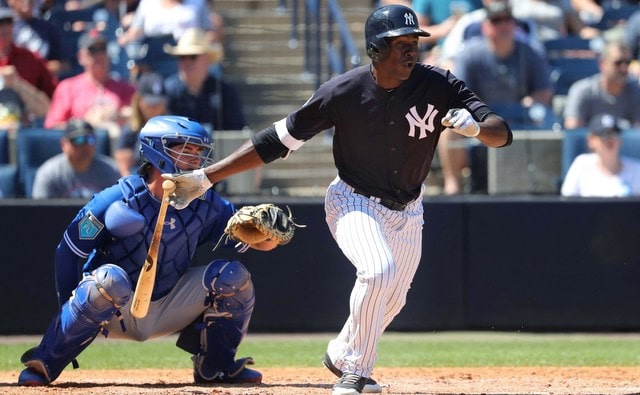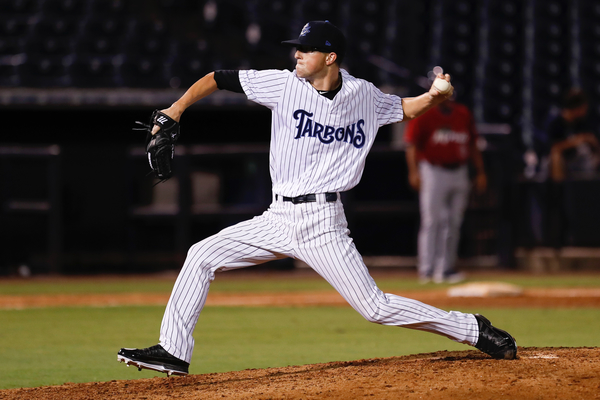Here are the final vote totals. This was our closest Prospect Watch vote basically ever:
- OF Antonio Cabello: 834 (22.6%)
- RHP Deivi Garcia: 703 (19.1%)
- C Anthony Seigler: 621 (16.8%)
- OF Everson Pereira: 460 (12.5%)
- RHP Clarke Schmidt: 411 (11.2%)
- RHP Jonathan Loaisiga: 250 (6.8%)
- RHP Albert Abreu: 248 (6.7%)
- RHP Roansy Contreras: 159 (4.3%)
Two years ago we set a Prospect Watch record with 5,433 votes. Last year it slipped to 4,868 votes and this year it slipped further to 3,686 votes. Part of that is me not leaving the poll up quite as long — two years ago the poll was up a full week — and I think part of it is decreasing enthusiasm for the Prospect Watch in general. We’ll see how this year goes and reevaluate after the season.
Anyway, Cabello may be a surprise Prospect Watch winner, but he is not some slouch prospect either. I ranked him as the fifth best prospect in the farm system and Keith Law recently wrote “Cabello has so much upside that I even had suggestions to put him in my top 100 (prospects list).” MLB.com ranks Cabello as the eighth best prospect in the system. Here’s a snippet of their scouting report:
Cabello has advanced discipline and bat-to-ball skills for a teenager. His bat speed and strength also give him plenty of raw power, which translated into him topping the Rookie-level Gulf Coast League with a .555 slugging percentage. He should develop even more pop as he adds more loft to his right-handed swing.
Cabello’s speed earns well-above-average grades from some evaluators, a major factor in the Yankees’ decision to move him from behind the plate. He’s still learning as a center fielder but should become at least an average defender once he improves his reads and routes. He has average arm strength and enough offensive ability to profile as a regular if he has to shift to a corner.
In a recent podcast (subs. req’d), the Baseball America team noted Cabello has drawn comparisons to Vlad Guerrero Jr. and Juan Soto for his innate hitting ability at the same age. That’s exciting. Last season the Cabello, 18, authored a .308/.427/.522 (168 wRC+) batting line with nine doubles, five homers, and ten steals in 46 rookie ball games. His strikeout (20.8%) and walk (14.1%) rates were also strong.
The downside? Cabello had offseason shoulder surgery, though he has been playing in minor league Spring Training games, which is a good sign. That tells us his recovery has gone well. At age 18 though, and coming off shoulder surgery, there’s a chance Cabello will open the season in Extended Spring Training, which means the Prospect Watch might sit silent for a few weeks. That would be a bummer, but what can you do?
The minor league regular season begins next Thursday and, with any luck, Cabello will be assigned to Low-A Charleston. It would be an aggressive assignment — Cabello will play the entire 2019 season at age 18 — but Cabello is a special prospect, and special prospects get aggressive assignments. Either way, I’m very much looking forward to following his progress.














